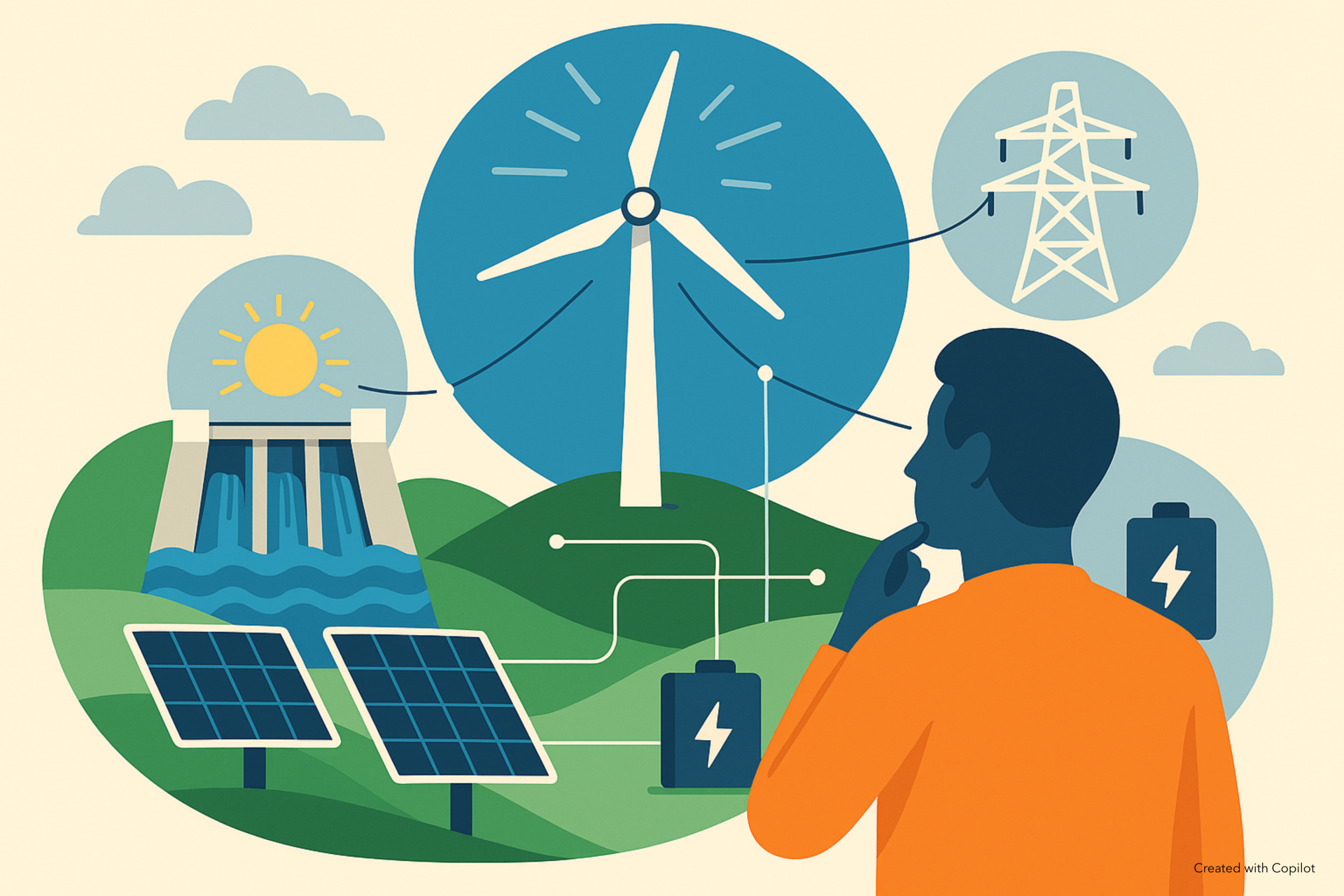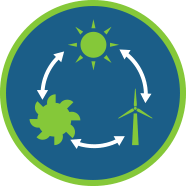By Julien Balsen, JP Manager Wind and Gloria Botton, JP Manager AMPEA, ESI and Geothermal

Europe’s clean energy transition is entering a new phase: one defined not only by technological breakthroughs, but by how we integrate systems, empower (research) communities, and ensure innovations make their way into markets. The challenge today is mostly to connect and align research, policy, and industry so that Europe’s scientific excellence becomes the driver of its industrial strength. This calls for new levels of coordination and shared purpose.
The energy transition is not just a technical challenge. It is also a challenge of market design, regulation, and governance. How should the energy system be structured? What infrastructure is needed, and what is the best way to operate the energy system? And how do we align research, regulation, and incentives so that innovations actually reach industrial scale?
Some of these questions guide the EERA Joint Programme on Energy Systems Integration (JP ESI), and they are increasingly shaping the way Europe approaches research and innovation in low-carbon energy.
At the Spring Event in Zagreb, researchers, policymakers, and industry experts from Croatia and across South-East Europe explored how system integration can unlock new efficiencies and accelerate the transition. The discussions made one thing clear: technology alone will not deliver Europe’s goals; the way we connect and coordinate across sectors will.
Building on this momentum, on 22 October, JP ESI will host a workshop focused on how to estimate the system value (and market revenues) of new technologies in the energy mix. Bringing together all EERA Joint Programmes, the workshop will foster cross-disciplinary collaboration and demonstrate how energy system modelling can inform both policy and industrial decision-making and guide innovation policy.
The following day, the 3rd Annual ESI Conference in Brussels will link system integration to the Clean Industrial Deal, exploring how Europe can decarbonise while maintaining industrial competitiveness. How can Europe break the deadlock where industries wait for more renewable electricity before electrifying, while renewable investment stalls due to a lack of demand? These are the systemic bottlenecks that integration (technological, market, and institutional) must help to solve.
This shift in thinking is visible across the EERA community.
In the wind energy sector, something unprecedented is taking shape. For the first time, researchers and industry leaders themselves will define the priorities, strategies, and funding mechanisms for wind energy innovation under a new €93.5 million Horizon Europe programme (2026–2027).
This is not just another call: it is a turning point. The community is no longer a stakeholder; it is the decision-maker.
“We are empowered to decide by ourselves,” says Stephan Barth, Coordinator of EERA JP Wind. “What’s new is that we are in charge of defining what is needed and what research projects are carried out. This has never happened before.”
At this year’s EERA JP Wind Innovation Forum in Amsterdam, that empowerment came to life. A record number of participants joined forces to co-create the future of wind energy research, generating over 150 research ideas.
“It shows the trust and willingness of our community to collaborate,” adds Ignacio Martí Pérez, vice-coordinator of EERA JP Wind. “We know the challenges ahead are too big for anyone to solve alone.”
By the end of the Forum, a shared vision had taken shape: one built on trust, inclusiveness, and collective ownership of Europe’s wind innovation agenda.
The European Commission’s new approach recognises that innovation thrives when the community leads. A large consortium will steer priorities, manage projects, and distribute funding to SMEs, universities, and cross-sector partners, reducing fragmentation and boosting collaboration.
As Beatrice Coda (European Commission, DG RTD) reminded: “In today’s geopolitical and economic context, we must all work together for a Europe that is more competitive, with a stronger industrial base.”
Across wind, systems integration, and beyond, Europe’s energy research sector is gearing up for accelerated collaboration in a form that combines empowerment, community alignment, and a clearer focus on market uptake. What is encouraging is that this systemic, cooperative mindset, long at the heart of EERA’s mission, is now gaining political traction. The EU is consciously embracing it, recognising that Europe’s competitiveness will depend not only on research excellence, but also on the speed with which innovations are scaled and adopted.
In the case of wind, this new programme aligns ambition with responsibility, embedding societal acceptance and stakeholder engagement at the heart of research. For the wind energy community, it’s clear: this is not just a funding opportunity; it’s a new era of empowerment, and the start of a collective journey to shape wind energy’s role in Europe’s low-carbon future.
In the case of Energy Systems Integration, the focus lies in connecting disciplines, technologies, and sectors to understand how innovation translates into system-level impact. Through initiatives such as the ones mentioned above, the programme catalyses dialogue between researchers, policymakers, and industry, helping to identify the regulatory and infrastructural conditions that could enable greater market uptake of low-carbon energy technologies.
In a moment when the EU is placing industrial competitiveness at the heart of its agenda, EERA’s role is more relevant than ever. By coordinating Europe’s energy research community and catalysing scientific collaboration, EERA helps ensure that the ideas, evidence, and innovation generated across its programmes are visible and ready to be picked up by those who can turn them into reality: industry, policymakers, and governments alike. Europe’s scientific excellence is its strength; EERA’s role is to make sure it resonates where decisions are made

